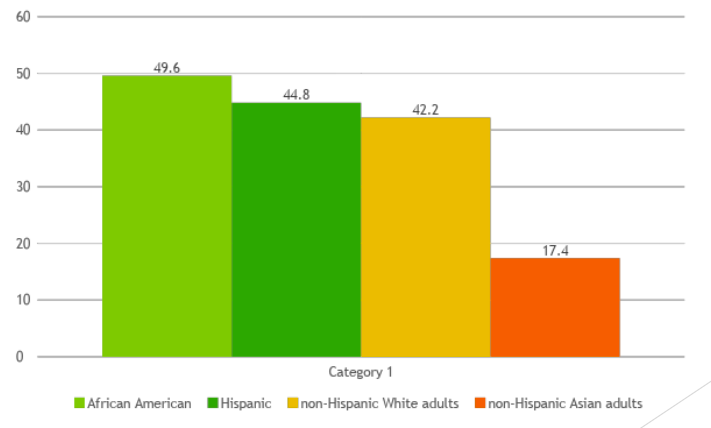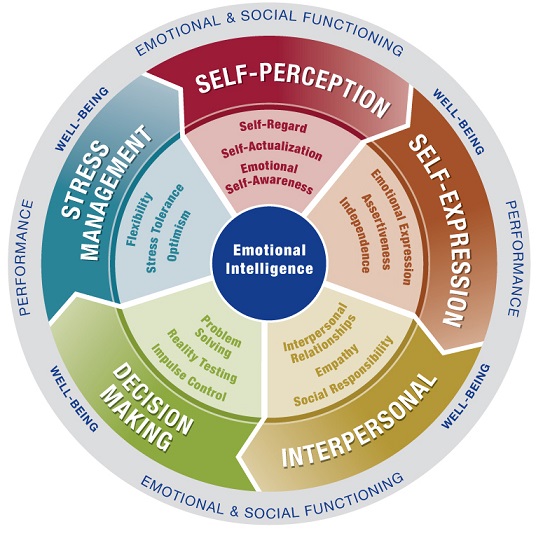Obesity
A Major Wellness Concern
The history of obesity in the U.S. can be traced back to the 1960s and 1970s, when a slight rise in the percentage of people with unhealthy dietary habits and increased weight were spotted. However, what would later on be called the epidemic of obesity started in the 1980s and has been growing ever since (Centers for Disease Control and Prevention, 2021b). The described trend can be correlated to the rise in the popularity of fast food and the increase in the number of people with a sedentary lifestyle (Lavie et al., 2018). Specifically, according to the Centers for Disease Control and Prevention (2021b), the rise in the obesity rates observed in adults from the 1980s to the 1990s represents a leap from 3.4% to 34.3%, which is a disturbingly colossal change. For children, the increase in obesity rates was 5% to 17% (Centers for Disease Control and Prevention, 2021b).
Description and Effects
The issue under analysis concerns the epidemics of drastic weight increase in the U.S. population, as well as on the global scale. Reports show that nutrition issues, which, on the one side, are represented by obesity and, on the other one, occur as undernourishment, have become some of the most common public health issues (Centers for Disease Control and Prevention, 2021b). In the U.S., obesity remains one of the main causes of death since it causes the development of hypertension, cardiovascular disease (CVD), and even diabetes type 2 (Centers for Disease Control and Prevention, 2021a). Therefore, obesity must be recognized as one of the common causes of concern worth paying closer attention to as a major public health threat.
Vulnerable Groups
As the reports mentioned above show, obesity affects people of any age. While some patients may be predisposed to developing obesity and gaining weight, the problem appears to be rooted in a much more general source, specifically, the lifestyle and the dieting choices of the U.S. population. Therefore, while adults are significantly affected by obesity, children also suffer from being overweight (Wang et al., 2020). Furthermore, studies show that non-Hispanic African American adults are under a severe threat since they represent 49.6% of the obese population in the U.S. (Centers for Disease Control and Prevention, 2021a). Hispanic adults, in turn, constitute 44.8% of the obese population in the U.S. The reasons for the specified phenomenon are likely to be linked to the socioeconomic status of the specified groups, namely, the lack of proper resources for health management and nutrition (Centers for Disease Control and Prevention, 2021a).

Key Characteristics of Patients
It is also crucial to bear in mind that those affected by obesity typically do not have the resources needed to change their lifestyle and dietary habits so that they can recover fully. Namely, the changes needed for the target audience to accept a healthier lifestyle typically require additional health education, as well as increased motivation and necessary resources. There are also numerous myths about weight management, including a range of diets that have not been approved by healthcare experts and, therefore, are likely to cause harm to those following them. Finally, among the impediments to improving their health, people with obesity typically face strong social contempt and a range of prejudices. As a result, obesity not only leaves a strongly adverse effect on people’s physical well-being but also affects their mental health.
Effects on My Framework
In retrospect, I have undergone a tremendous transformation, both personally and professionally, after studying the idea of wellness. Namely, the concept of wellness has affected me significantly by enlarging the scope of my understanding of the phenomenon. By examining different ways in which wellness can be measured, the multitude of factors shaping wellness rates, and the constituents of wellness, I have learned about the connectivity of body systems. Namely, I have realized that changes to a certain body system will have an immediate impact on the rest, therefore, contributing to the overall deterioration of health (Bradley et al., 2020). Thus, I have learned to approach the issue of wellness from a comprehensive perspective.
Effects on My Field (Nursing)
The critical analysis of wellness as the amalgamation of sustained functions of different body systems, as well as the promotion of patient education, has also been influenced by the field significantly. In the nursing context, managing and preventing obesity requires not only developing a progressive exercise plan and a change in the patient’s diet but also active engagement with the community and promotion of health literacy and patient education. Therefore, the issue of obesity has affected by field dramatically by making it pivot toward patient communication.
Wellness and Society
Effects on Interactions
The critical analysis of wellness as a phenomenon and the state that should be actively promoted and achieved in target audiences by nurses has shaped my approach toward interacting with others and understanding global social issues. Specifically, with a more nuanced knowledge of wellness, I have started viewing communication with others as a means of encouraging the development of wellness-related skills and closer attention to the issue of health maintenance. For instance, I have been striving to manage conflicts productively in my communication with others in order to keep both my mental health and the health of others unaffected by stress and unresolved conflicts while promoting the need for healthier lifestyles. Moreover, my stance on global events has also shifted since I have begun to assess these events from the perspective of how they contribute to the wellness of others.
Example of Effects
For example, the recent rise in the number of obesity-related disorders observed on the global scale has made me, as a nurse, ponder the idea of creating a global wellness program aimed at educating patients about the dangers of the subject matter. Specifically, the opportunities involving the use of motional competence and cultural analysis to address patients’ emotional, cultural, and spiritual needs in the process were considered.
Strategies for Critical Analysis
To perform the critical analysis mentioned above, the strategies involving the use of emotional intelligence as the tool for engaging with others and learning why they choose unhealthy lifestyles and, particularly, adopt poor eating habits despite the availability of other options. Moreover, empathy and focus on cooperation should be integrated into the approach that will allow improving the quality of communication and support people in their need to choose healthier lifestyles. In everyday life, the described strategy would imply promoting a dialogue between me and family members and friends when discussing their lifestyles and eating habits. To address the everyday responsibilities of experts in nursing, wellness can be used in the form of focusing on self-maintenance and health management to avoid stress factors and the development of bad habits.

Conclusion
A critical analysis of wellness can contribute to an increase in the value of personal and professional interactions since it provides an understanding of why people make specific health-related choices. Namely, in relation to obesity, the application of wellness leads to evaluating sociocultural and socioeconomic issues, including cultural beliefs and financial concerns, that shape people’s eating habits. By embracing these factors, experts will be able to produce solutions in a cross-cultural context, whereas general audiences can build awareness on a personal level.
References
Bradley, D. T., Mansouri, M. A., Kee, F., & Garcia, L. M. T. (2020). A systems approach to preventing and responding to COVID-19. EClinicalMedicine, 21. Web.
Centers for Disease Control and Prevention. (2021a). Adult obesity facts. Web.
Centers for Disease Control and Prevention. (2021b). Prevalence of overweight, obesity, and severe obesity among adults aged 20 and over: United States, 1960–1962 through 2015–2016. Web.
Lavie, C. J., Laddu, D., Arena, R., Ortega, F. B., Alpert, M. A., & Kushner, R. F. (2018). Healthy weight and obesity prevention: JACC health promotion series. Journal of the American College of Cardiology, 72(13), 1506-1531. Web.
Wang, Y., Beydoun, M. A., Min, J., Xue, H., Kaminsky, L. A., & Cheskin, L. J. (2020). Has the prevalence of overweight, obesity and central obesity levelled off in the United States? Trends, patterns, disparities, and future projections for the obesity epidemic. International Journal of Epidemiology, 49(3), 810-823. Web.
Zechner, M. R., Pratt, C. W., Barrett, N. M., Dreker, M. R., & Santos, S. (2019). Multi-dimensional wellness interventions for older adults with serious mental illness: A systematic literature review. Psychiatric Rehabilitation Journal, 42(4), 382-393. Web.